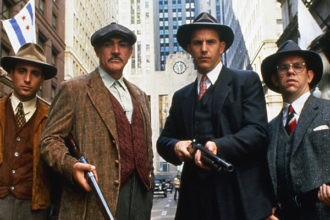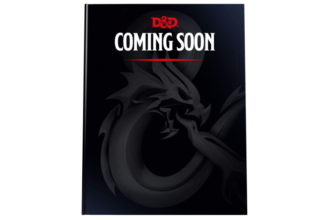Five Kinds of Plot

Many years ago, I wrote an article for Harbinger of Doom on five kinds of plot found in tabletop, live-action, and video games. Because it was for my personal blog, it heavily emphasized LARPs that formed a (reasonably) common language within my friends group. For Tribality… well, I’m much less confident that those portions of the text are useful. This, then, is an update that draws on more recent properties, such as Critical Role – not a universal text, but the closest thing available. (I’ve finished Episode 96 of the Vox Machina campaign; there may be minor spoilers here for anything up to that point.)
Before I get into this, I want to point out that I may use terms incorrectly, even though I majored in English. It’s, uh, been a hot minute.
I think that there are five kinds of plotlines that we really see in games, and I’ll try to point out parallels in genre fiction. Feel free to point out categories that I’ve overlooked. Unsurprisingly, there are areas where these categories bleed together, making classification more disputable. To a certain extent, this relates to the classic seven basic conflicts, but those get lumped together here because of how they are applied in gaming and genre fiction. There are also categories of plot at stake here that just don’t matter in literature (because everyone is under authorial control), but matter hugely in games.
Main Plot
Main plot is the story the GM has shown up to tell, in a lot of cases. It’s the one where the dark lord needs to be thrown down, where the dragon needs to be slain, where the secrets of who’s behind the attacks on the village need to be uncovered. It is conflict driven by people who are off-camera until the last few minutes of their lives, or (if the GM/story gives them a way to get away) only occasionally. Maniacal laughter is often involved.
It seems that the existence of main plot is central to why genre fiction will never be truly literary. Failing to accept this why I was a bad English major, as Real Literature Is Strictly Character Driven. Main plot is essentially the same from one game medium to the next, and its parallels in genre fiction are obvious.
For a Critical Role example, I would say that the Chroma Conclave storyline is about as perfect as it gets. “Dragons kick over civilization” is a big dramatic premise. The PCs had plenty of input on how the story played out, but Matt drops its opening on them like a bomb. There’s nothing wrong with that! It’s a great scene and storyline, plenty of twists and turns, but it doesn’t have a lot to fit it to any of my other categories.
Character Plot
Character plot is the story that the players have brought in on their own: their personal drama, baggage, and connections. If you want to see character plot at its most pure, go into a chat- or forum-based roleplay environment in which the characters don’t have any greater concerns to discuss or roleplay about. For want of interesting conflict, they will start telling each other their character histories and devising personal relationships. Don’t get me wrong, though: character plot is good.
It is most recognizable by its exclusively personal scale; in games, you see this as a single NPC showing up to talk to a single PC, typically a relative or NPC romantic partner. This is often conflict between protagonists, since most gaming has multiple protagonists of equal stature. I would venture to state that a lot of people mean character plot when they talk about roleplaying as a concept.
Character plot is hugely useful for LARP plot committees, because it gets the players to entertain themselves while the plot committee works on doing its next thing. Conversely, there’s almost nothing categorical that plot committees can do to facilitate or drive engaging character plot, so it’s hard to teach a committee to do this well. The best I can say is to create an interesting, conflict-filled setting and subject the playerbase to a high degree of external pressure; they’ll probably take care of the rest. On the downside, this is where Drama Llamas come from in gaming.
Critical Role has tons and tons of character plot – I think it’s one of the most distinctive features of the show. Listening to the show, it’s clear that some players are more invested in that part of play than others – no surprise there. Matt Mercer’s primary contribution to this, as a DM, seems to be patience and making space for it, particularly when the hijinks run completely out of control and into property damage. His players, fortunately, have a pretty good understanding of how to make sure each scene has a point and, more importantly, an ending.
Personal Mechanical Plot
This is a kind of plot that is a little more unique to games, though it’s modeling literature in a way. Personal mechanical plot is what happens when a character strives for teaching or self-improvement. It’s usually Man vs. Self conflict, sometimes given allegorical form to become Man vs. Supernatural. Some examples include spell research, initiatory tests to advance within a practice of magic, or training for ranks within warrior orders. This is common in the LARPs I’ve played and run.
In literary terms, this is the Bildungsroman. It’s different in gaming than in literature, though; in literature, the climax of the story is when the hero defeats his antagonist and proves that he has grown, allowing him to return home or continue his wandering. In gaming, the main antagonist is part of the Main Plot, often not even faintly related to the Personal Mechanical Plot that the character experiences. Theoretically, the protagonists want the mechanical results of these powers so that they can defeat the villains of the (probably multiple) Main Plots. In practice, the protagonists want the mechanical results of these powers because they’re self-aggrandizing and power-hungry.
To put that in less judgmental terms, part of our escapist fantasy is feeling awesome. The rewards of personal mechanical plot are a major source of individual might. It is not unreasonable to frame the role of the villain as “the characters that the protagonists defeat to demonstrate their awesomeness.” Many games are up-front about this and have waves of nameless mooks that are all but acknowledged as punching bags. The desire to become awesome is the same as being power-hungry; racing against other players for degrees of power is the same as being self-aggrandizing.
I like running personal mechanical plot in games, because its promises of reward are clear and appealing, and because the mechanics involved are hooked into the setting. I like playing it because I’m good with being a power-hungry player – it’s a survival skill. It’s also All About Me, and I’m vain! Tabletop games have a hard time offering this kind of plot in a lot of cases; 3.x D&D’s main examples are qualifying for prestige classes and spell research, unless the GM is willing to hand out statistical benefits in excess of what’s granted through level progression.
Critical Role has some fantastic examples of personal mechanical plot. Keyleth’s Aramenté springs to mind, in this case granting her more cultural authority and her mantle, rather than powers separate from the fundamental druid progression. As far as I know, anyway. The Vestiges of Divergence, both acquiring and advancing them, take on some of the character of personal mechanical plot as well.
World Mechanical Plot
This category of plot, like personal mechanical plot, has a lot of bleedover into other categories. What I’m talking about here is stories that turn on world laws, cosmology, obscure science facts, and the like. This covers everything from locked-room mysteries, where the antagonist is nearly irrelevant, to Asimov’s Three Laws of Robotics stories. (I know you know what these are; I link the article because it has a brief overview of how stories have tested some of the Laws.) Stories presenting complex and compelling systems of magic, or other rules systems that can be discussed in-character, are absolutely For Me.
World mechanical plot is pointedly not character driven; part of its popularity in genre fiction is that it presents a puzzle to the reader, and the reader is competing to figure out the answer before the protagonist does. This is why it’s so crucial for the author to play by certain rules, giving the reader all of the clues to which the protagonist has access and doling out those clues over time. Rob Donoghue makes a solid argument here that capers are fundamentally similar to mysteries, and I can see how a caper can be a kind of world mechanical plot.
Since I just said that World Mechanical Plot isn’t character driven, I’ll counter my own statement by pointing out Time Traveler’s Wife, a character-driven, Man vs. Supernatural/Destiny story with no clear antagonist other than Henry’s own doom, that is a hands-down example of World Mechanical Plot. The author cares about the rules of time travel she has developed, and the way those unfold in Henry’s and Clare’s lives is the plot. She’s field-testing the rules she’s written just as directly as Asimov does with his Laws. I’m not saying that’s the only plot at stake in TTW; Henry’s emotional baggage and Gomez’s… cut for spoilers are Character Plot, for sure.
I always felt that this was a kind of plot that 3.x did very well, because it had its own WotC-created cosmology but also adapted relatively well to homebrewed cosmologies. As I discussed in the same previous Harbinger post that I linked above, 4e doesn’t present a strong cosmology, and it’s very hard to find a real system of magic in its rules. In addition to losing elements on which to hang stories, it also removes a lot of the deductive reasoning that players can perform during encounters to predict enemy behavior. 5e returns to a more defined cosmology, with things like the death curse in Tomb of Annihilation and Ahghairon’s dragonward in Waterdeep: Dragon Heist as story elements that (can) bring world mechanics into the center of a story.
Several of the seven types of conflict might drive world mechanical plot – fantasy defaults to Man vs. Supernatural, unsurprisingly. Many fairy tales that deal with Man vs. Destiny at all become world mechanical plots, as the protagonists seek loopholes in cosmic laws so as to escape destiny or ill-made bargains. Man vs. Technology is one of my opening examples for this type of plot. Locked-room mysteries can be Man vs. Man or Man vs. Nature; I’m sure we’ve all seen locked-room mysteries that are revealed not to have been murders at all, but tragic accidents.
Critical Role examples are a little thinner on the ground here, though Hotis and the eventual trip to the City of Dis count because the whole story turns on the cosmological rules around fiendish immortality. I’m guessing that the final story arc of Vecna has a lot to do with cosmological rules, but for now I’ve avoided spoilers.
Political Plot
Plot within this category is particularly likely to belong in Main Plot (politics being a hurdle along the way) or Character Plot (if what you actually have is a lot of the game’s protagonists bickering and forming factions). Still, there are some kinds of plot and encounters that carve out a space not otherwise defined, as Kainenchen was pointing out to me when I first presented this idea to her. The kinds of things I’m filing into this space are the guild-advancement quests in Oblivion, negotiation plotlines that present neither side as the villain (and, ideally, have PCs loyal to both sides), and the like.
This kind of plot is challenging to write in the first place; where anyone can come up with a dark lord to smite (and so very many have), fewer have written compelling political dilemmas. Shattered Isles, King’s Gate, and Eclipse all started with political plotlines; Arinth’s ruling triumvirate (SI) and the Matter of Albonne (KG) notably used these as smokescreens for their serious villainy. It’s such a popular move specifically because it introduces conflict without tapping a clear villain, leaving room for the story to reveal the villain in a shocking twist sometime around Season 2, and exposing the depths of their villainy sometime around Season 4. It also quickly introduces a lot of characters who are going to matter in the long term.
So when I say that Babylon 5 is structured like a LARP, what I mean is that it too followed this structure. One of the important notes about political plot in books as well as games is that it generally won’t carry a whole campaign or a whole novel, even though it may continue to be relevant plot all the way through. It’s just wouldn’t be as satisfying if the Shadows never showed up to get blown to hell by the White Star. Fantasy/sf adventure stories love to have villains to beat the bejesus out of in games, and if both sides are a little sympathetic… well, where’s the fun in that?
For outstanding exceptions to the above, just look outside of fantasy/sf adventure: Roger Zelazny’s Chronicles of Amber and Erick Wujcik’s equally-legendary Amber Diceless, and any World of Darkness LARP or tabletop game. (WoD can be about adventure-with-politics or pure politics, just depending on the Storyteller and players.)
On a model more like the guild advancement quests in Oblivion, I see some parallels in Brust’s excellent Vlad Taltos novels. The Organization is a group of bad guys that our… hero… belongs to for the first several books of the series. Each novel of that span has a Main Plot and a clear Man vs. Man conflict for Vlad to puzzle his way through; these Main Plots are often World Mechanical Plot, because Brust primarily likes to write puzzles that his rather tarnished hero can solve with witchcraft, knives, and sarcasm. Along the way, though, there’s a lot of maneuvering within the Jhereg to displace and/or dispose of the other members of the Organization who are in Vlad’s way. They’re bad people, but a lot of them aren’t sufficient challenges to be called antagonists. If Vlad’s adventures here were a video game, you’d say that he was filling up bars of faction reputation, because his influence within the Organization increases as he claims more territory and does work for the people in charge. Jhereg is a specific case in which his target, Mellar, is someone the reader doesn’t care about one way or the other, except that he’s causing a lot of problems for people that we like. He did at least screw over bad people… who happen to be Vlad’s bosses. When Vlad unravels the mystery of Mellar’s motivations, we discover that he is a lot more like a Main Plot villain, just in case we weren’t completely on board with his brutal murder already.
D&D can accept political plot as fodder for roleplay and as a backdrop to thrilling heroics, but as no edition of D&D has done social conflict all that well, it may not be what the rules do best. Much as A Song of Ice and Fire (the novels) are a good example of political plot that is going to give way to thrilling heroics as we approach the climax, the ASoIaF rules published by Green Ronin are probably one of my personal preferences for running such a setup.
I don’t think I’ve heard anything in Critical Role that I’d put in this category. The closest they come is working quietly to garner support when they come to a new place – the City of Brass, the City of Dis, and so on. That’s neither good nor bad. It’s just not particularly the story they seem inclined to play.
Conclusion
I’d like to hear in comments about categories of plot that I’ve overlooked, better classifications that apply well to gaming plot, and so on. I’ve tried to mention where a medium of roleplaying games or a particular roleplaying game handles a kind of plot well or poorly, with detailed examples from genre fiction and a wide variety of games. All of these kinds of plot can be done well or poorly, and all have their place in gaming.



